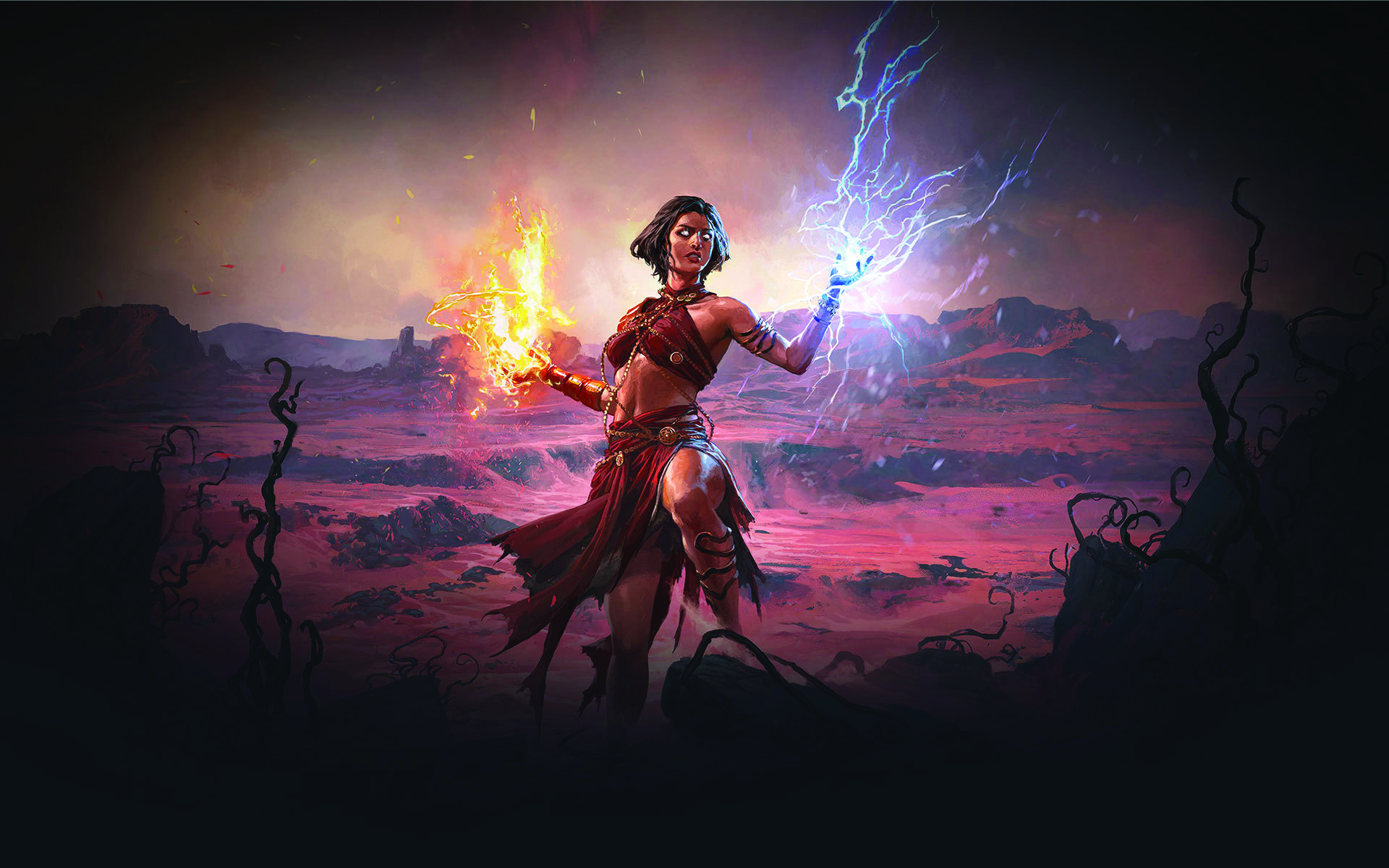The bad news is that Path of Exile 2’s early access debut won’t be the full game, as initially hoped. The good news is, even limited to half of the main story and six of the planned 12 classes, this is shaping up to be one of 2024’s best action-RPGs.
That’s saying a lot, given that PoE2 will be going up against a refreshed and expanded Diablo 4, as well as recent rivals like Last Epoch and No Rest For The Wicked. But with a dozen hours of a near-finished build under my belt, I’m confident in that assessment. With just weeks to go until the launch of Grinding Gear Games’ ambitious ARPG sequel, I was invited to visit its offices in Auckland, New Zealand, to play the upcoming early access version and talk with the developers. After several fruitful chats with the game’s lead designers and a deep dive into the mechanics of the new Monk and Mercenary classes, I’ve almost nothing but high hopes for the game.
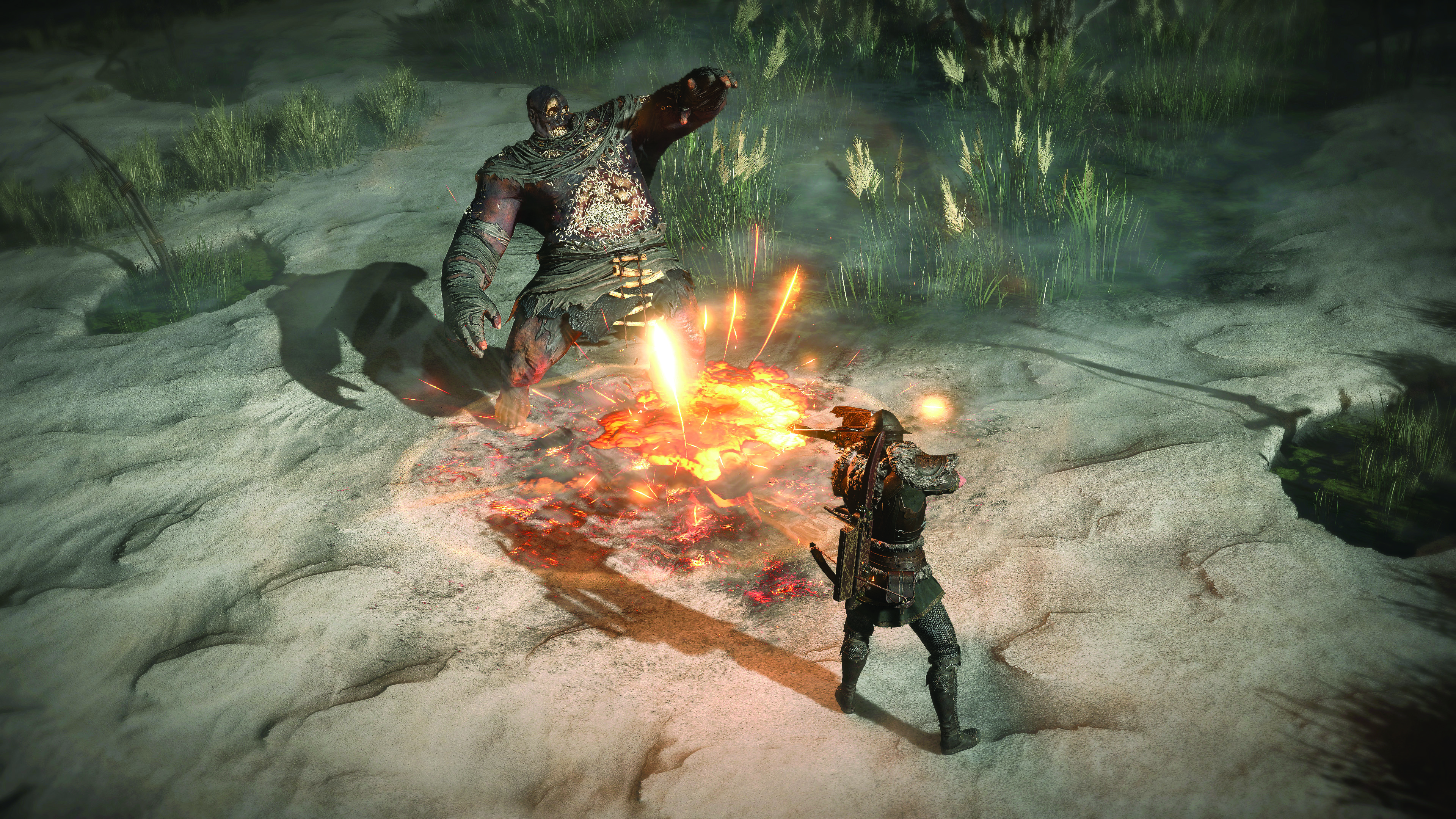
When I last played Path of Exile 2 at a press event in LA earlier this year, I had a blast, but it was arguably a little intense for most, geared to make both action-RPG fans and soulslike players sweat. While still challenging (I died a half-dozen times), it feels like the difficulty curve has been smoothed out in this near-launch version, and the game now expresses itself better, making it more accessible to total newcomers, Diablo fans looking for something fresh and (obviously) Path of Exile devotees excited for the sequel.
One of the biggest mechanical changes to PoE2 is how distinct the classes now feel. In the first game, they felt more like starting templates, nudging you towards playstyles, but the Monk and Mercenary gave me entirely different mechanical experiences, as well as having enough voice chatter to define them as characters, too. The majority of my play-time was as the Monk, a pious martial artist ascetic based around combo-heavy quarterstaff combat, and a focus on building and spending resources for area-of-effect attacks
Carry a big stick
Unlike the Warrior, which I had played previously in LA (your classic sword and board fighter, heavily reliant on the new blocking mechanic), the Monk doesn’t have much in the way of defensive options in the early game beyond well timed dodge rolls and killing enemies quickly. The good news is that playing your cards right can do absurd damage, with the Killing Palm skill letting you punch the souls out of weakened enemies, giving you an orbiting Power Charge. These are consumed by the Falling Thunder skill to fire a wide fan of powerful electrical arcs, capable of wiping out half a screen full of enemies in one hit or taking a solid 10-20% off a boss’s health bar—a simple but always satisfying one-two punch
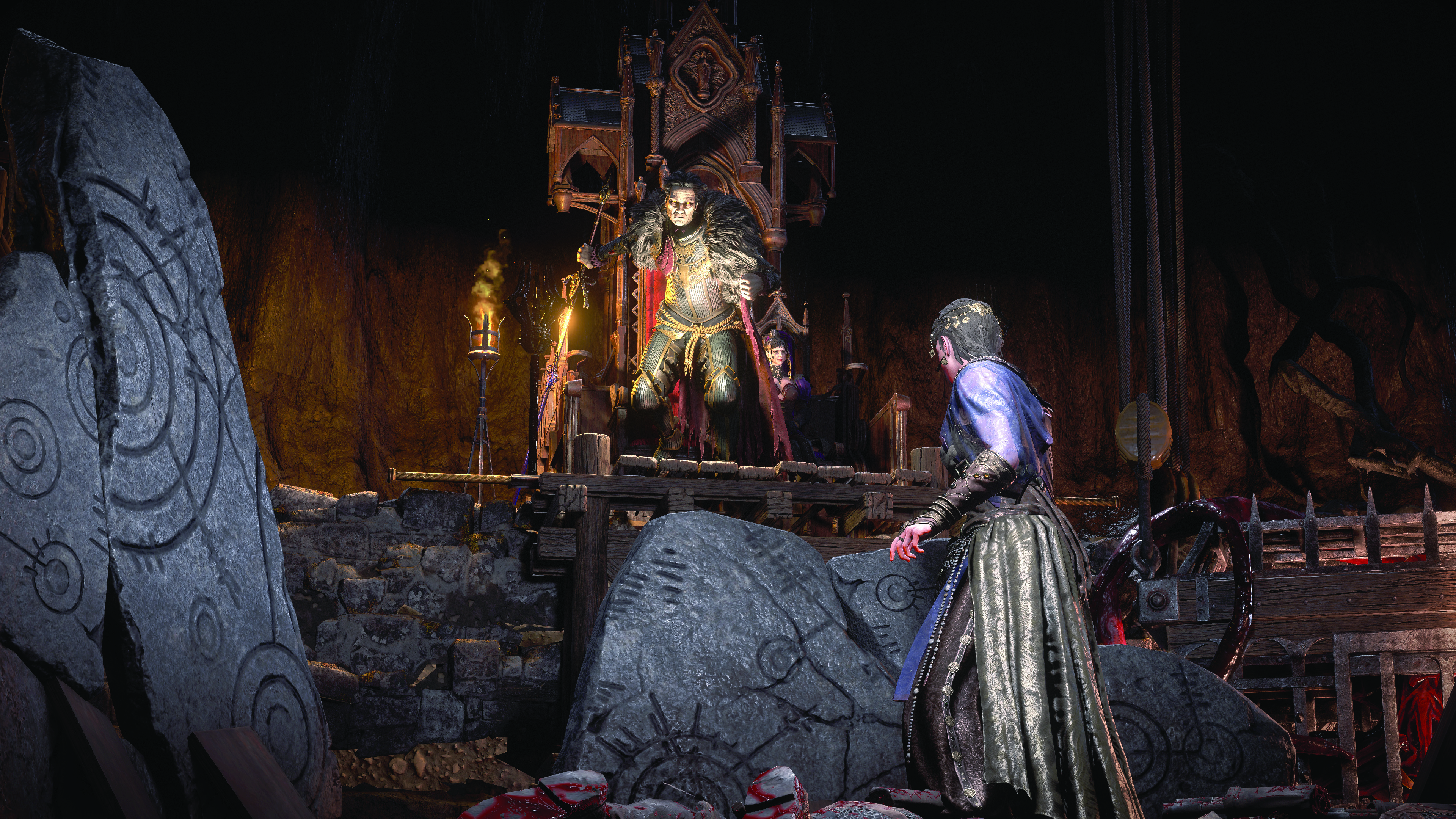
Even more satisfying to pull off is the Tempest Bell skill. Hitting enemies with basic staff strikes (now upgradeable through support gems, meaning even basic melee remains viable in PoE2) builds up the Combo resource. Fill it up, and you can channel Wukong to enlarge the ornamental bell on the end of your staff (there’s no non-filthy way to say that, sorry) to a massive size. Once placed, you’ve a few seconds to smack your bell with your staff (phrasing!) to send out concussive waves, damaging enemies, or casting elemental spells on the bell to spread their effects to nearby foes when you resume your drum-beat. It makes for a technical, very involved playstyle, but it meant that there was seldom a dull moment through all of the first act—a feat few ARPGs can pull off.
The tail end of my time with the Monk saw me picking up a skill that made my dodge rolls drop ghostly after-images that also conferred Power charges if destroyed, encouraging risky attack-baiting combat. And that was just the tip of the iceberg in terms of character building. I’ve not even seen what build-warping options the Monk’s ascendancy sub-classes will offer, and I was only playing with the first eight of maybe 20 skills intended for the class. And of course, this being Path of Exile, there’s nothing stopping you from picking a few abilities from other classes, too.
Run and gun
While I spent less time with the Mercenary, I was genuinely impressed at how much just switching class made it feel like playing another game. Inspired by twin-stick shooters and playing great with PoE2’s slick new dual-analogue controller UI, the Mercenary’s skills expand your loadout, giving you a variety of ammo types and fire modes for your high-tech crossbow and its underslung grenade launcher. One mode behaves like a rapid-fire submachine gun, affecting enemies hit repeatedly with the Armor Break debuff. You can then switch to a sniper-like armour-piercing mode for one big hit that converts that armour break into a hefty chunk of extra damage, knockback and stun.
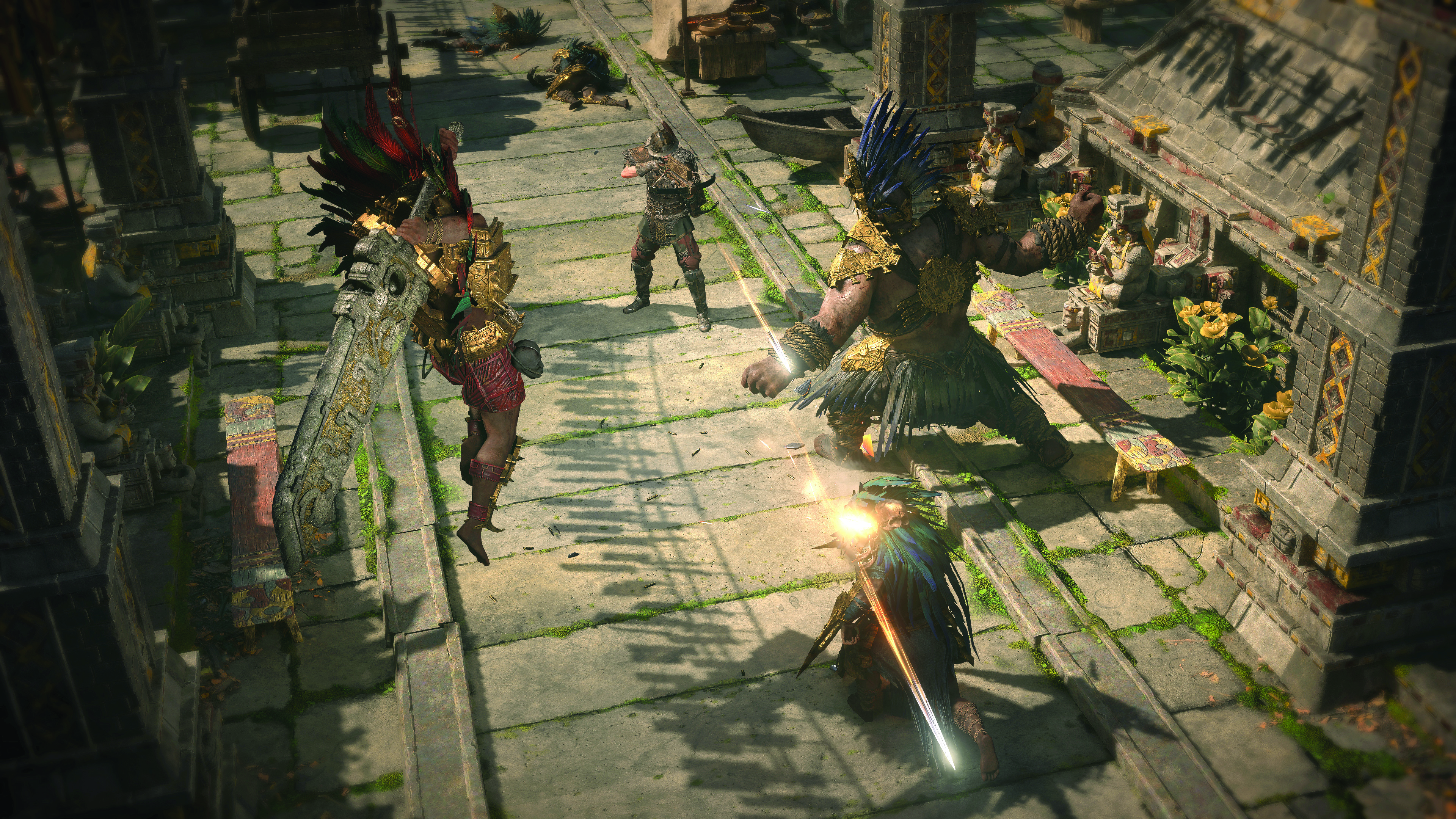
And of course, no good shooter would be without a shotgun. I’m still not quite sure how it makes sense as a projectile fired from a crossbow, but the spread-shot’s combination of beefy up-close damage, the satisfying ‘KER-CHUNK’ as you load the next shot, and great potential to upgrade the skill into a room-sweeping blast of ricocheting flechettes with just a couple of support gems attached to the skill made this one an immediate winner.
The developers told me that the Mercenary was probably the easiest class for new players to learn, and that felt about right. It’s not without difficulty though, once bosses start breaking out their big area-of-effect attacks, forcing longer pauses between piling on the damage.
And of course there are some fun synergies going on here too. The shotgun-like fire mode does bonus damage against frozen enemies, so equipping frost grenades for your underslung launcher makes for an easy combo. It feels indicative of how Path of Exile 2’s classes work in general—each one has its own shenanigans that are immediately clear, and the skills offered early on will nudge players towards putting together intuitive attack combos.
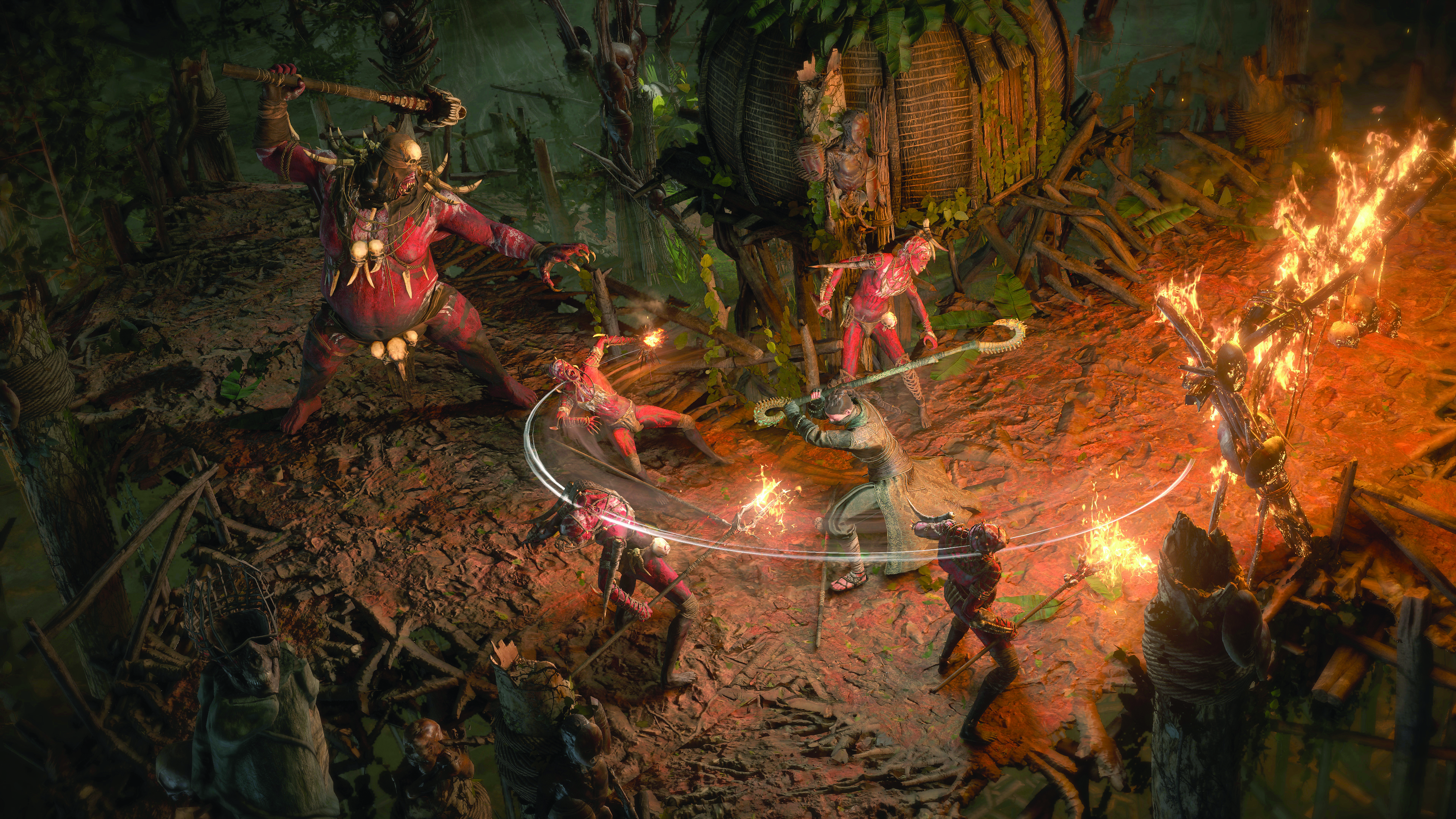
While the game does recommend you pick skills intended for your current class and level, indicating which you should ideally use, there’s also nothing stopping you from getting wacky and picking skills from any other class, especially as ‘uncut’ skill gems (letting you freely pick what skill they become) drop quite frequently as loot—one every few minutes during the second act.
So, character-building is intuitive, fun and fast, and the process of smashing monsters into loot-studded paste is satisfying too. But without a narrative hook or interesting places to go or monsters to slay, that could all be undermined. Fortunately PoE2 is no slouch there either. While the first game’s (extremely) haunted fantasy New Zealand was a fun setting, environments and enemies could blend together a bit, especially once you got to the remixed latter half of its massive ten-act campaign
Acting on instinct
PoE2 is aiming for a more reasonable six acts, but from what I’ve seen they’re all beefy (clocking in at around nine to ten hours apiece for new players) and varied. The game takes players on a globe-trotting adventure, initially seeking revenge against a bloodthirsty Count in a very European region, hitting all those Hammer Horror tropes. Witches, werewolves, vampires, ghosts, druid circles, deep dark forests and high castle walls abound. But once the lord of the castle (who transforms into a half-man, halfgigawolf monstrosity mid-fight) is out for the Count, a larger quest to avert the apocalypse begins, with each successive act bringing an entirely fresh set of environments, channelling Diablo 2 at its best.
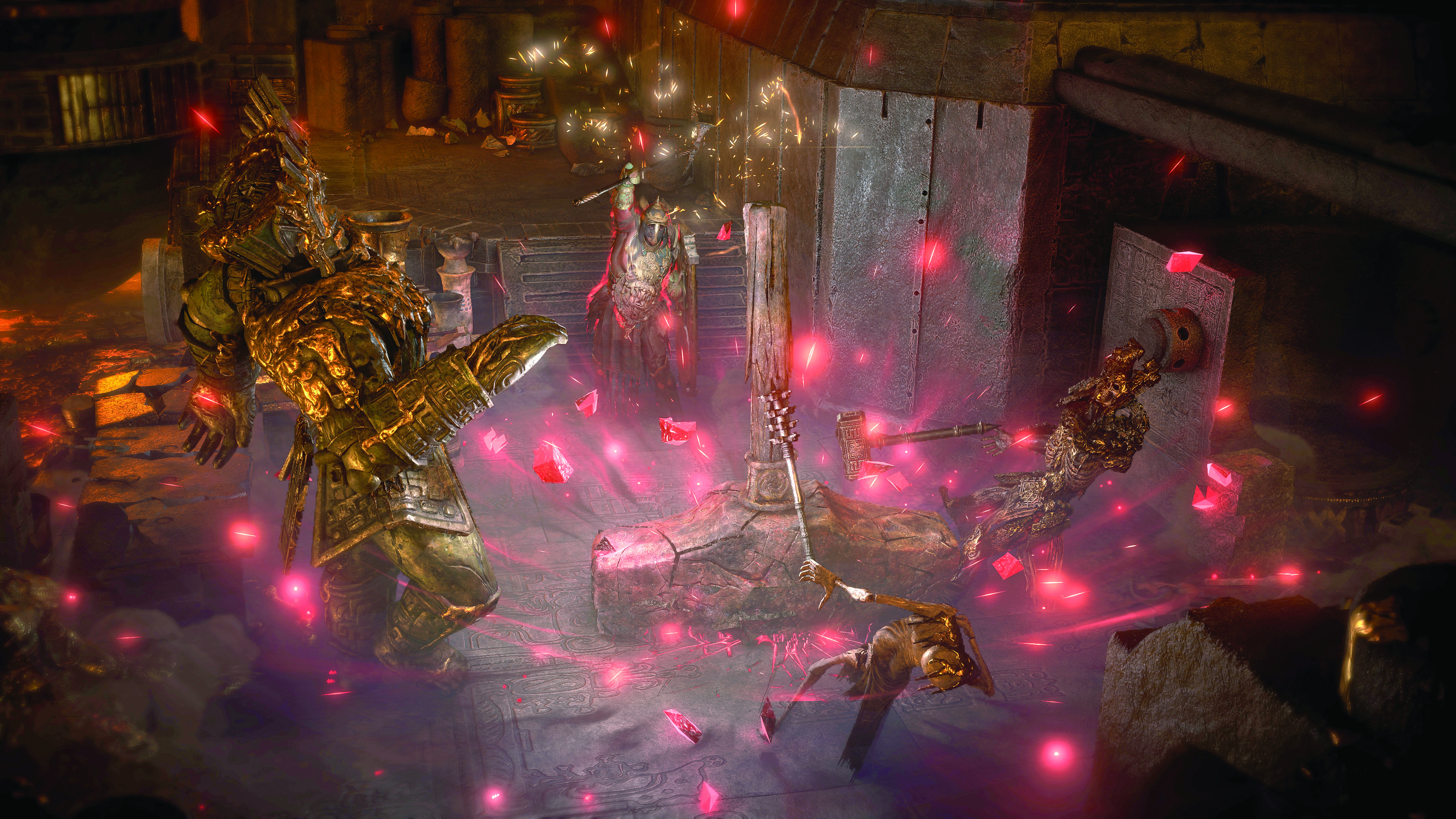
Act Two is desert-themed, with a mixture of ancient sandy ruins, open plains, cursed elephant boneyards and a battle across a web-like tangle of massive towers linked by bridges and walkways. Act Three takes players to the jungle and across time, as you investigate the ancient Aztec-inspired Vaal civilisation both in the present and in their past heyday. It’s riffing on what we saw of their lands in the first game, but greatly expanded in scope.
What I saw of Act Three was fascinating, as players get to battle through Vaal city streets in their prime, before draining a river basin in the present, uncovering the half-drowned and thoroughly mutated descendants of the city’s people thousands of years later.
The third act culminates in a battle through a spectacular Aztec-themed mad science lab complex, full of unsettlingly detailed vivisected corpses, cyborg monsters and deadly lasers—like a Mesoamerican take on Quake 4’s Strogg. And this trip through Vaal lands runs more than just skin deep—Act Three introduces some new gameplay mechanics, letting you corrupt your equipped items with Vaal magic to perhaps open up gem slots in them, letting you tweak their stats further with special blood crystals.
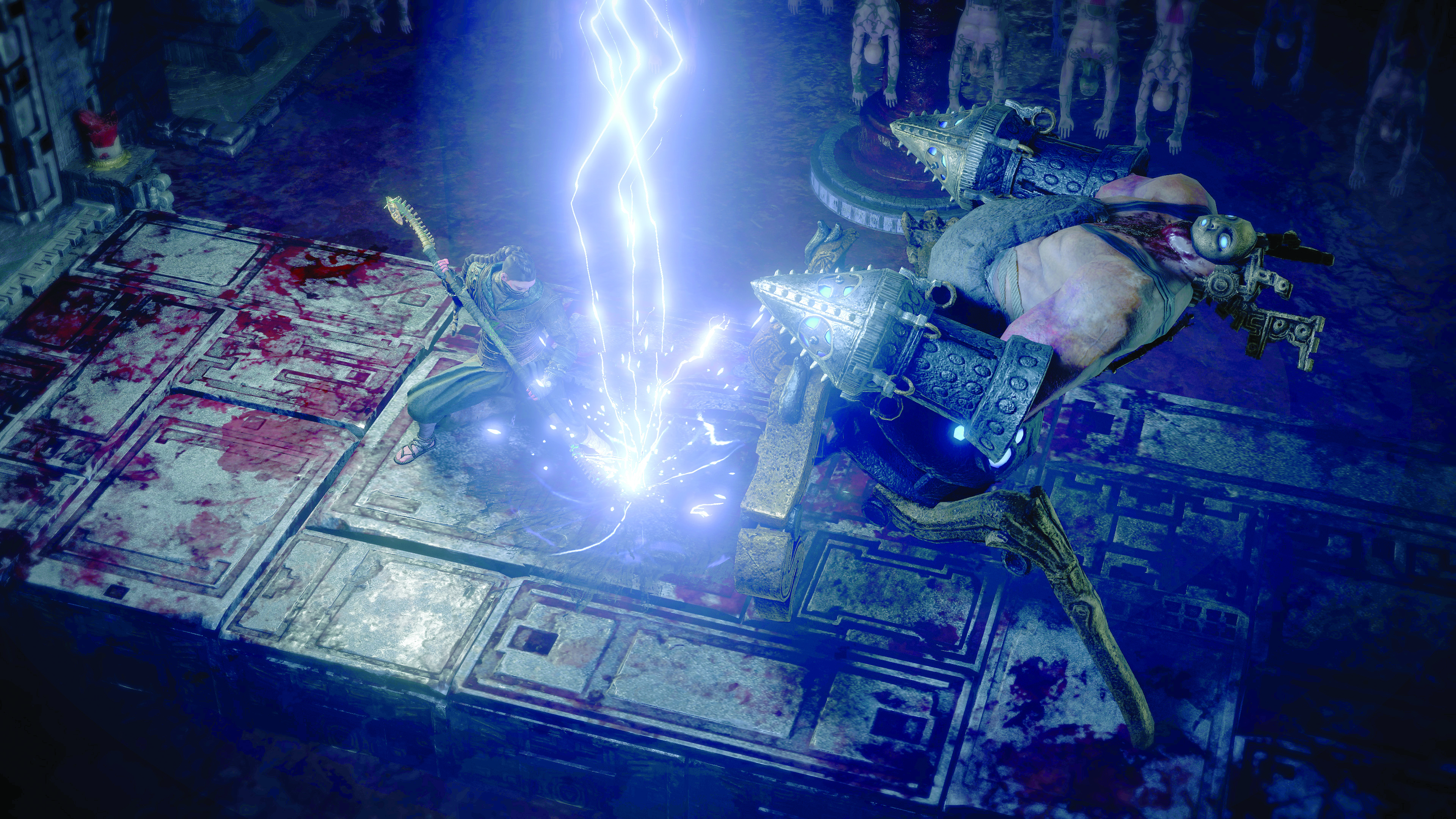
Acts Four through Six weren’t available in the build I played, but I expect the first two to keep up this formula, each exploring a new part of the world and its cultures and monsters. As for Act Six, all the information I could wring out of Grinding Gear is that it’ll clock in at around half the length of previous acts, but will crank up the stakes, spectacle, and be more than a little apocalyptic. Hardly surprising, given that this is Path of Exile, but I’m still eager to see what kind of hell I get to inadvertently unleash on the world.
Big game hunting
While the acts and their multitude of procedurally generated environments are impressive enough, and the sheer variety of basic enemies is higher than genre average, what really blew me away are the bosses. By the time the game leaves early access, Grinding Gear plans for there to be over 100 major boss battles in the game, none of them repeated, and all of them being multi-phase set-piece encounters. A figure that even puts Elden Ring to shame, once you trim out its many repeated or remixed fights.
They’re a beautifully varied set of encounters, from the aforementioned Count and his gnarly monster-wolf form to an Aztec-styled guard captain that you have to fight in a shifting ring of spear-and-shield wielding soldiers that contract or thrust at you at their commander’s barked orders. The multi-armed skeleton construct that you fight high above the desert sands midway through Act Two could pass for a final battle in most other RPGs, so having it be just a bump on the road highlights just how hard the devs have gone on this particular aspect. I don’t want to spoil too much, but the final battle of Act Three is one of the most impressive fights I’ve seen in the genre, which should dull the sting of the story pausing on a cliffhanger until PoE2 leaves early access.
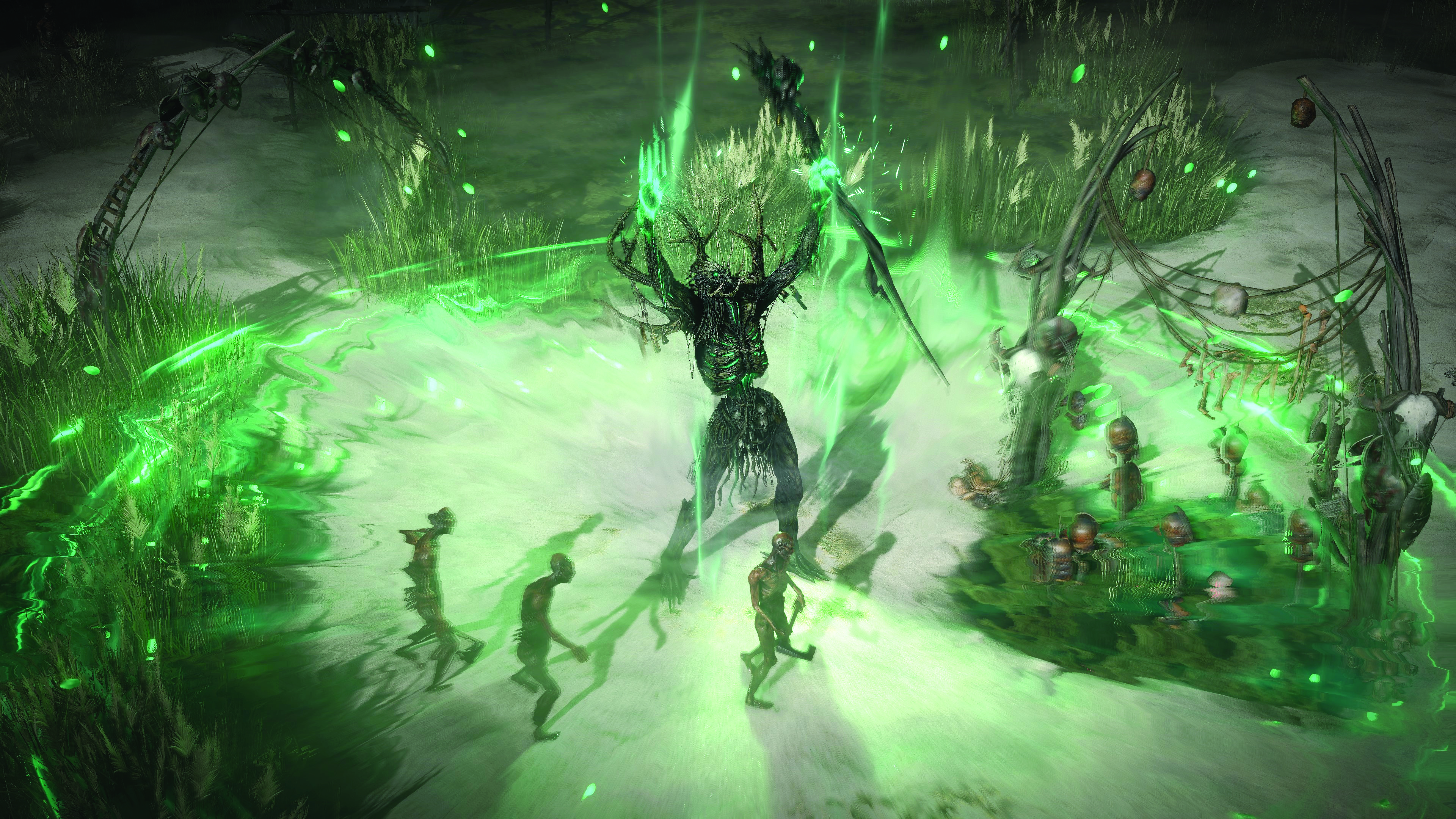
The only real critique I have of the game so far stems from the boss encounter design. While great fun for the most part, quite often a boss will change phase by way of a lengthy, invulnerable animation, or even just by hoofing it across the arena. In a game where everything else bleeds when you hit it, having moments of downtime in the middle of the game’s most impressive, complex fights feels a little bit off. But it does seem like a singular blemish on an otherwise very impressive package.
When I asked director Jonathan Rogers what he felt was the one part of the game that could draw Diablo 4 players away, fresh from a new expansion, he said it was these boss battles. Having fought around 20 of them, and seen some of the ones due later in the early access release, it’s hard to disagree. But for Path of Exile veterans, the story and boss battles are just a warm-up before what lies beyond those 50 hours of main story.
A cure for all ills
According to Rogers, the decision to split Path of Exile 2 into its own game (it was originally planned to be a gigantic expansion for PoE) came because of his desire to make a clean break from the original and address some of its fundamental flaws. The original PoE, while popular, has a notorious assortment of pain points. Esoteric game mechanics that take external resources to properly learn, character-building that can lead you into unwinnable situations, a convoluted item trading system and an endgame that (while satisfying) often devolves into deleting screen after screen of enemies with little thought.
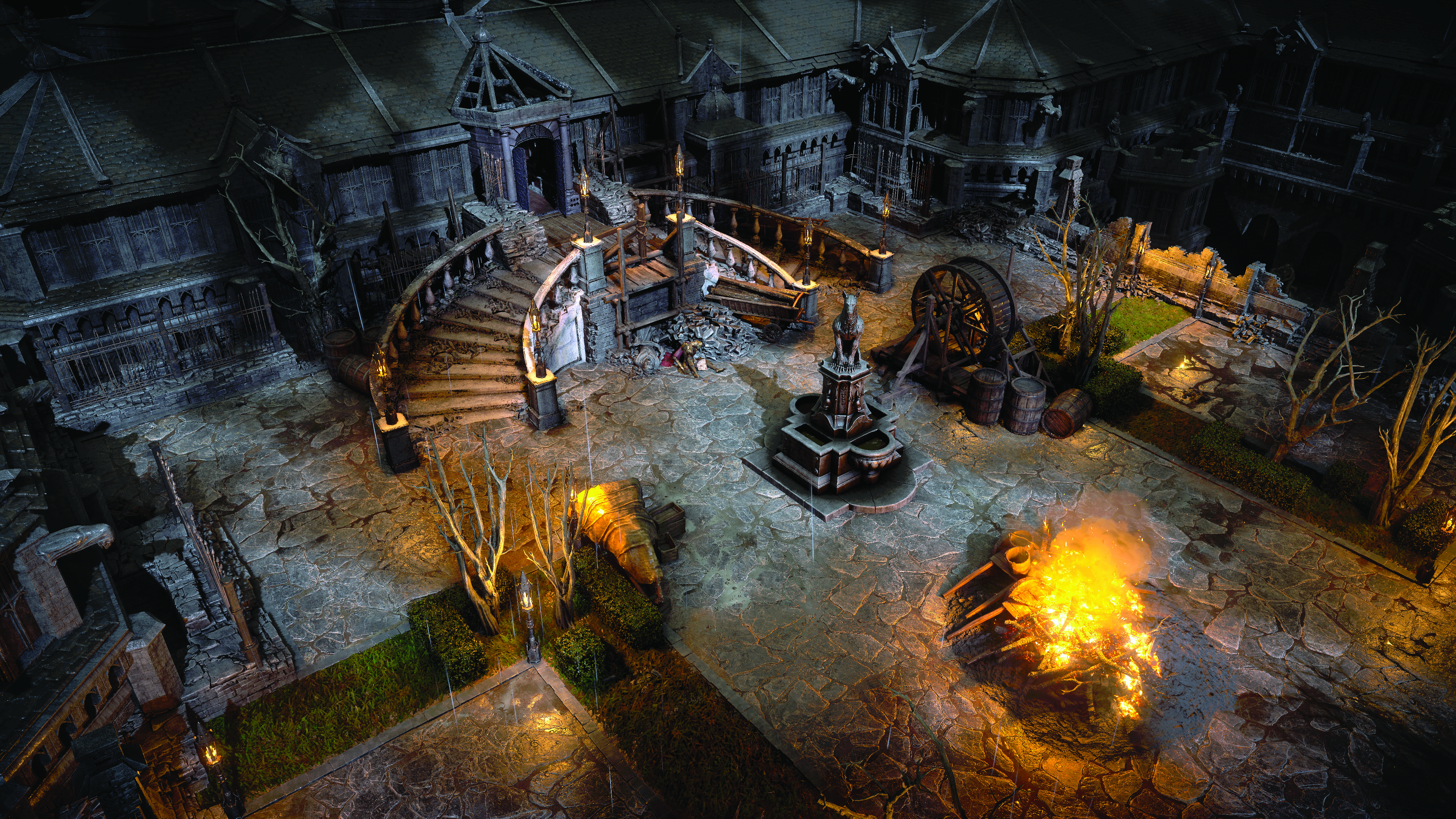
This is still unmistakably Path of Exile, with all its many hybrid crafting-and-currency items, dizzyingly huge passive skill trees and potential to create freakish cross-class character builds, but designed to be more comprehensible for players who might be coming in fresh from Diablo 4’s more streamlined hack ‘n’ slashery. The highly customisable skill gem system is still there, but no longer reliant on you plugging skills into your equipment like Final Fantasy materia. Instead, your skills just go into a side-panel in the UI, letting you freely augment them with potentially game-breaking Support Gems.
On a similar ‘cleaner and smarter’ note, there’s less loot overall. The game is designed to be played well into endgame without needing an elaborate community made loot filter, dropping fewer but higher-grade items, and providing more ways to convert them into useful currency. Gold—untradeable with other players—exists as a new basic currency, automatically hoovered up as you move, and lets you buy essentials or gamble on potentially good gear if one of your slots is underpowered.
You can freely trade one currency item for another, but it comes with a gold tax, and gold can also be spent on quickly and easily respeccing parts of your sprawling passive skill tree. There was even some talk of letting players sell items to one another through trading NPCs in their customisable hideouts, albeit with a gold tax to prevent this major ease-of-use feature from completely obliterating direct player-to-player item trading. Given the fiddly nature of trading in the first game, it’s one of the features I most hope makes the cut as the game approaches launch.
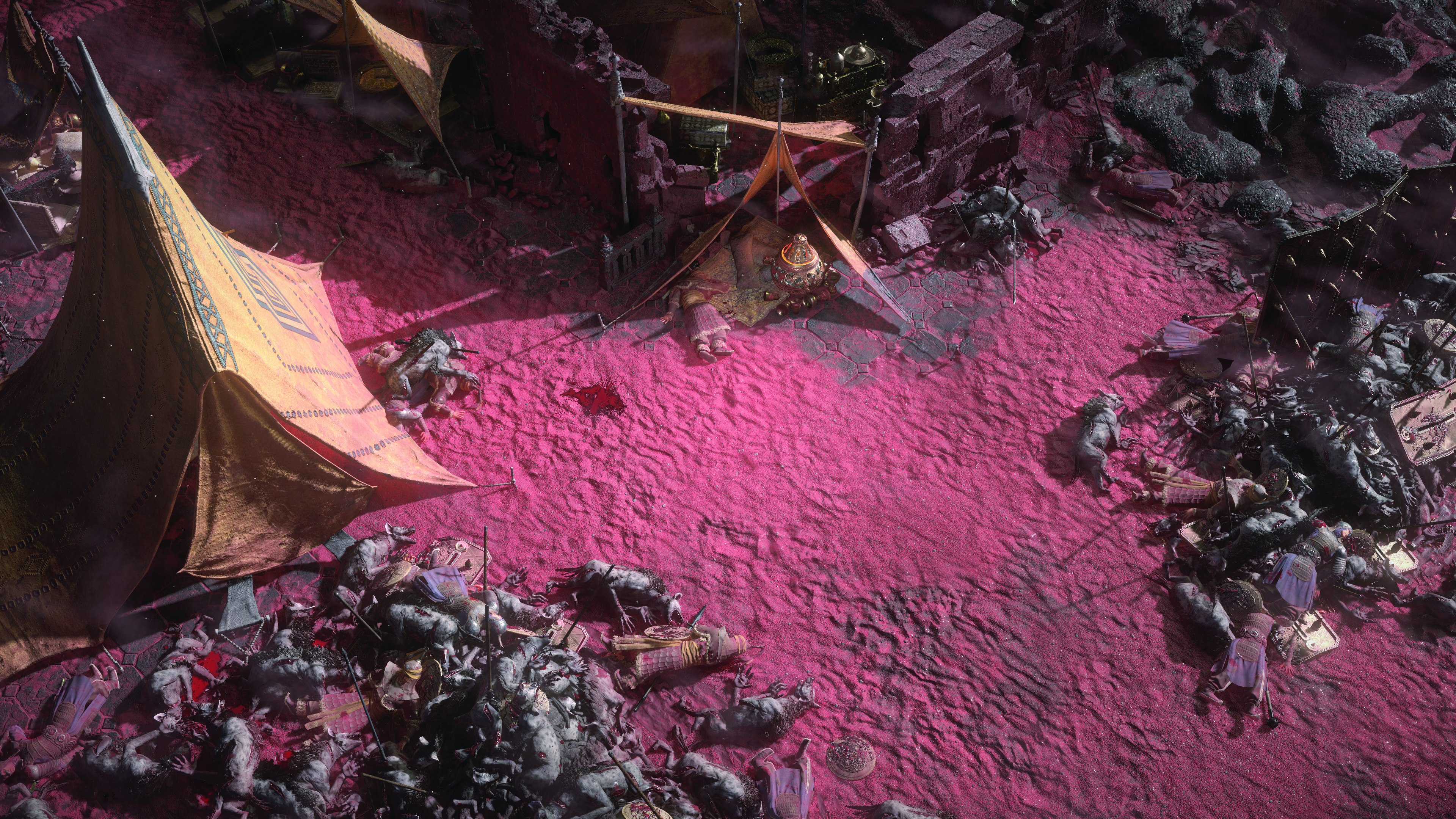
But probably the most significant shift in the design, and one that wasn’t too obvious playing through the early game, but seemed to hold true of the later-game footage I was shown, is a throttling of the game’s speed. While Grinding Gear still wants players shattering PoE2 with wild character builds (and plan on reviving the Build Of The Week showcase series on YouTube to highlight the best), it doesn’t want you just tuning out of the game entirely as enemies melt around you.
Rogers was keen to highlight that a speedster character in PoE2 will be swinging five times a second, rather than 50. Still a lot, but parseable by human eyes. The way the game is balanced should de-emphasise all-speed builds too thanks to DPS increases being more effectively multiplicative.
Less frantic swinging doesn’t mean you have to go slow, though. Experienced players still have plenty of room to zoom. The original PoE has a dedicated speedrunning community (with the best players able to blaze through all ten acts in under three hours), and there are some shades of that even within the core development team.
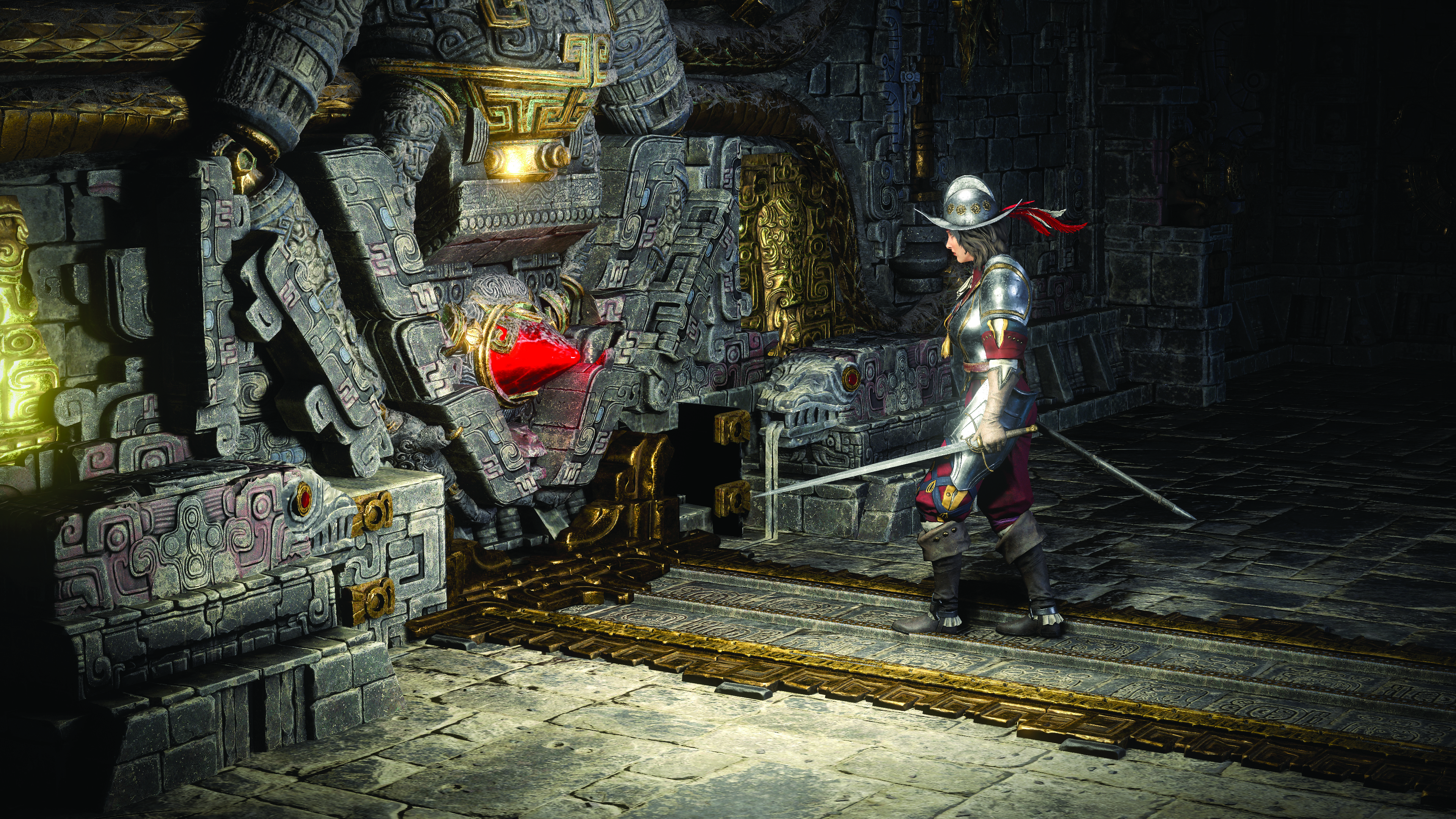
Co-director Mark Roberts boasts that he could hack his way through PoE2’s three early access acts in under five hours—a feat most of the other developers still found baffling, considering that the average time for testers is around nine or ten hours for a single act.
Drink deep and descend
Being so close to release doesn’t mean that Grinding Gear is playing any part of this safe, either. I thought it was bold enough to roll back the changes to healing and mana regeneration from the LA press event (where you didn’t get additional healing charges from killing minor enemies, only checkpoints and town runs), but it’s got something far more significant in the pipeline, and hopefully ready to roll by launch day.
While not in the preview build I had access to, the studio was hard at work completely re-working the Flask system, a part of Path of Exile which has remained almost unchanged since the first game’s beta release.
Inspired by the simpler control binds of the gamepad UI (D-pad left for health, right for mana), the plan is to limit players to a single slot each for health and mana flasks (with more capacity on both) and introducing a new set of ‘trinket’ slots that provide utilitarian buffs, like automatically activating freeze/ bleed/stun cures. Once again, a push towards cutting out the fiddly bits while retaining that classic Path of Exile complexity. It’s a common refrain, highlighting just how far Grinding Gear is willing to go in overhauling old, tired ideas if it thinks it has a better option, even if it’s just weeks before launch.
Path of Exile 2 launches into early access on December 6.







